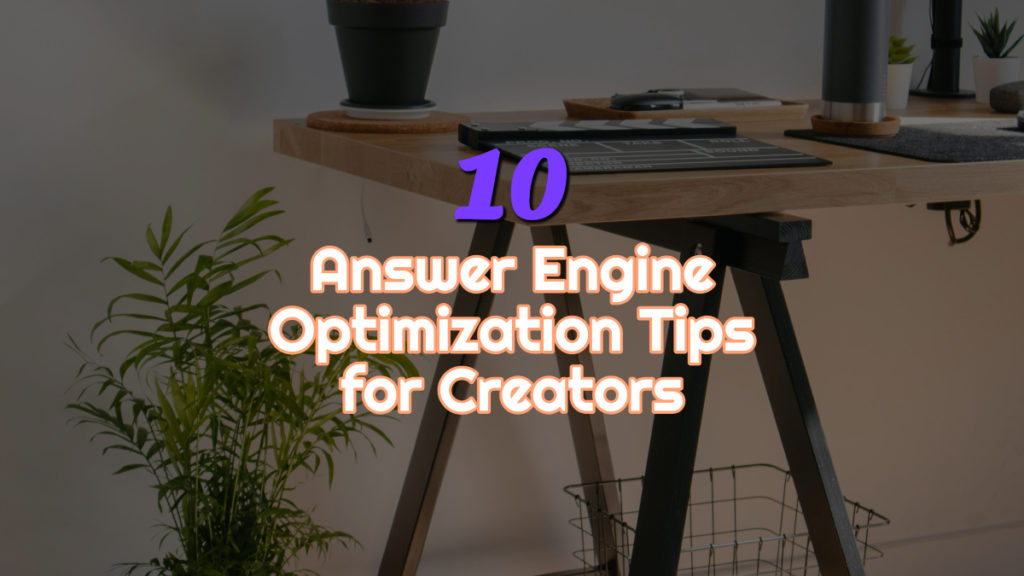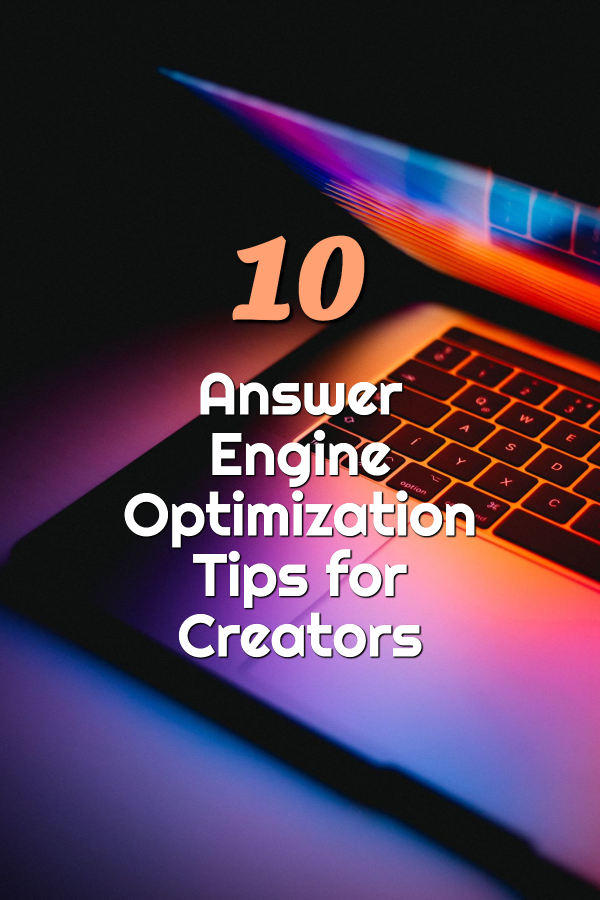There are more opportunities than ever to get discovered by your ideal buyers. AI tools and answer engines like ChatGPT, Perplexity, and even Google’s AI overviews are reshaping how information is discovered. This is where Answer Engine Optimization (AEO) comes in.
Our goal should never just be traffic; it should also be visibility and authority in conversations where people are asking questions and expecting instant, authoritative answers.
Below, you’ll find really useful AEO tips designed specifically for creators. Whether you’re a blogger, YouTuber, podcaster, or social media creator, these tips and strategies will help you show up when people ask AI for answers.

1. Create Content That Answers Specific Questions
Answer engines are built to deliver clear, direct responses. Creating content such as frequently asked questions, how-to guides, useful listicles, and comparative content can be really helpful.
Think about the questions your audience would type into Google, or the type of questions they would ask AI, and build content that matches those searches word-for-word. You can find some of these questions in platforms like Answer The Public.
You can also find some of these questions in various online forums, on social media posts, or on YouTube videos. There are many ways to find what people are asking, and focus your content on answering those questions.
2. Structure Content for Clarity
AI tools scrape, summarize, and reframe content. The type of content that will be useful is content with a good readability score.
- Consider formatting your content so that paragraphs are no more than 3 to 4 lines each.
- Clear H2 and H3 headings with relevant keywords.
- Add a mix of bullet points and numbers.
This helps answer engines quickly identify the key points in your content.
3. Use Conversational, Natural Language
If your content feels robotic or stuffed with jargon, it’s less likely to be featured in various search results. Write like you’re explaining something to a friend. Use “you” language, clarify ideas, and anticipate follow-up questions.
Leave industry jargon at the door for the most part; while industry jargon may be used by others in your industry, it doesn’t mean that your ideal buyers will use it when doing various searches.
4. Optimize Beyond Keywords
Keywords are still useful, but AEO cares more about the bigger picture. Instead of focusing on one exact phrase, try to naturally include related words and ideas in your content. For example, if you’re writing about “healthy smoothie recipes,” try to also use related keywords like “easy breakfast ideas,” “blending tips,” and “nutritious ingredients.”
By covering the topic in a broader, natural way, you make it easier for AI to understand the full context, and that increases your chances of being pulled into an answer.
5. Authoritativeness Builds Trust Signals
Imagine you’re asking a professor for help. You’d probably trust the teacher who has done their homework, shares real stories, and shows they know what they’re talking about. Answer engines work in a similar way; they want to pick answers from people who look authoritative, honest, and reliable.
To build that trust, you can:
- Share real experiences, data, or case studies
- Cite reputable references when possible
- Add an “About” page or bio that highlights your expertise
- Keep your content updated with fresh examples
- Create consistent educational video content
6. Use Cases & FAQs
An easy win for AEO is to create FAQ-style sections in your content. AI tools love scanning these because they’re already formatted in question-and-answer form. Add them to your blog posts, product pages, or video descriptions. Use cases are also great for this, and if you have an FAQ section on your website, even better.

7. Focus on Evergreen Content
Answer engines prefer reliable, evergreen content. Content that remains useful long after it’s published (like guides, tips, and FAQs) is more valuable than short-lived trends or updates. Evergreen content has a better chance of coming up in searches on an ongoing basis in search engines, and the same for answer engines.
8. Keep Content Up to Date
Outdated information hurts your AEO chances. AI tools look for relevance and freshness. Even updating your existing blogs, videos, or FAQs with new stats, graphics, links, and examples will signal that your content is current.
You’re likely already doing this for your website and blog content, so this is something that should be rather easy to incorporate into your AEO efforts.
9. Answer Niche Questions Others Overlook
Instead of competing for broad terms like “Travel tips,” try to rank for specific topics like “Travel Tips for Families With Young Children.” The more niche you go, the more likely you are to be the best answer available. In a lot of ways, this is similar to SEO optimization as well.
10. What to Do If You Don’t Have a Website
You do not need a website to come up as an answer in various AI tools. Here are some tips for your content to help you with AEO, even if you don’t have a website.
- Publishing long-form content on Instagram or LinkedIn
- Posting guides and answers on Quora, Medium, or Substack
- Publish regularly on YouTube and also use the description space well
- Create recurring series on micro-niches or answer very specific questions
- Add text overlay on your short-form videos
These are all simple yet effective tips to help answer engines understand and recommend your content.
Things to Keep in Mind
Answer Engine Optimization is not about gaming the system. It’s about making your content as clear, useful, and trustworthy as possible so that AI tools naturally pull from it.
For creators, this is a massive opportunity. Instead of chasing short-term clicks, you can build long-term visibility across AI-driven searches. Start by answering the questions your audience is already asking, structure your content for clarity, and make sure your expertise is easy to find—even if you don’t yet have a website.
By leaning into these AEO tips, you position yourself not just as a content creator, but as a trusted answer provider in the age of AI.


Leave a Reply